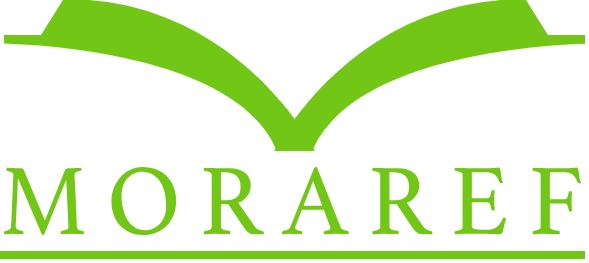Pengenalan Kebiasaan Cuci Tangan Dengan Sabun Sebagai Inisiatif Kesehatan di Sekolah Dasar
Abstract
Elementary school age children are often faced with problems related to dental and oral health, Clean and Healthy Living Behavior (PHBS), and Hand Washing Behavior with Soap (CTPS). The health of elementary school-aged children can be positively impacted through the implementation of health education strategies, such as education about hand washing with soap (CTPS) which influences hand washing attitudes in elementary school students. This research is a literature review research, where the author searches various relevant sources, such as journals, books, articles, the internet, or documents related to the topic under study. From the analysis of various published scientific research journals such as those conducted by Merlina (2018), there are still students (29.3%) who have a poor level of knowledge about (CTPS), 37% do not know the need to wash their hands with soap, 50% do not know why do you have to wash your hands with soap, 35.9% don't know where to wash their hands, and 15.2% don't know the importance of CTPS. The habit of washing your hands with soap regularly can help reduce the risk of contracting diseases that are often transmitted to children in the school environment, such as diarrhea. Good hand washing habits not only protect children from infectious diseases, but also help children acquire healthy living habits that can last throughout the child's life.
Keywords
Full Text:
PDFReferences
Adriani, A., Oktavia, S., & Febrina, W. (2021). Efektivitas Pendidikan Kesehatan Terhadap Perilaku Cuci Tangan Pakai Sabun Dalam Upaya Pencegahan Covid-19. REAL in Nursing Journal, 4(2), 77. https://doi.org/10.32883/rnj.v4i2.1268
Anggraini, D., Fitriyani, I., & Restuastuti, T. (2017). Tingkat Akseptabilitas dan Tolerabilitas Cairan Pencuci Tangan Formula World Health Organization (WHO) yang Digunakan Mahasiswa Kepaniteraan Klinik Senior di RSUD Arifin Achmad Provinsi Riau. Jurnal Ilmu Kedokteran (Journal of Medical Science), 9(1), 27–32.
Anwar, R., Miloszewski, K. J. A., & Markham, A. F. (1998). Identification of a large deletion, spanning exons 4 to 11 of the human factor XIIIA gene, in a factor XIII-deficient family. Blood, The Journal of the American Society of Hematology, 91(1), 149–153.
Aulia Putri, F. (2023). Faktor-Faktor yang Berhubungan dengan Kejadian Hipertensi pada Usia> 45 Tahun di Provinsi Sumatera Barat (Analisis Data Riskesdas 2018). Universitas Jambi.
Cochran-Smith, M., & Zeichner, K. M. (2009). Studying teacher education: The report of the AERA panel on research and teacher education. Routledge.
Curtis, V., & Cairncross, S. (2003). Effect of washing hands with soap on diarrhoea risk in the community: a systematic review. The Lancet Infectious Diseases, 3(5), 275–281.
Departemen, K. (2014). Panduan Cuci Tangan Pakai Sabun. Kesehatan Departemen, 1–34.
Edza Aria, W. (2018). Pengaruh Penyuluhan Cuci Tangan Pakai Sabun Terhadap Sikap Mencuci Tangan Siswa. Jurnal PROMKES, 7(2), 64–69. file:///C:/Users/asus x453/Downloads/document (1).pdf
Ferry Efendi-Makhfudli, F. E.-M. (2020). Keperawatan Kesehatan Komunitas Teori dan Praktik Dalam Keperawatan (106). STIKES PERINTIS PADANG.
Freeman, M. C., Stocks, M. E., Cumming, O., Jeandron, A., Higgins, J. P. T., Wolf, J., Prüss‐Ustün, A., Bonjour, S., Hunter, P. R., & Fewtrell, L. (2014). Systematic review: hygiene and health: systematic review of handwashing practices worldwide and update of health effects. Tropical Medicine & International Health, 19(8), 906–916.
Kementrian Pendidikan dan Kebudayaan. (2017). Profil Sanitasi Sekolah Tahun 2017. http://ditpsd.kemdikbud.go.id/upload/filemanager/2020/04/Profil-Sanitasi-Sekolah-Tahun-2017.pdf
Lewis, H. E., Greenland, K., Curtis, V., & Schmidt, W.-P. (2018). Effect of a school-based hygiene behavior change campaign on handwashing with soap in Bihar, India: cluster-randomized trial. The American Journal of Tropical Medicine and Hygiene, 99(4), 924.
Lina, H. P. (2017). Perilaku hidup bersih dan sehat (PHBS) siswa di SDN 42 Korong Gadang Kecamatan Kuranji Padang. Jurnal Promkes, 4(1), 92.
Mahmudah, M., & Handayani, N. R. (2016). Pengaruh Pendidikan Kesehatan dengan Pengetahuan tentang Cuci Tangan pada Anak SD Kragilan Mojolaban Sukoharjo. Jurnal Ilmiah Maternal, 1(01).
Merlina, B. (2018). Gambaran Pengetahuan dan Perilaku Cuci Tangan Pakai Sabun (CTPS) Pada Siswa Sekolah Dasar di Wilayah Kerja Puskesmas Gedong Tataan. RUWA JURAI, 12, 102–107.
Notoatmodjo, S. (2003). Pendidikan dan perilaku kesehatan.
Notoatmodjo, S. (2014). IPKJRC (2015). Ilmu Perilaku Kesehatan. Jakarta: Rineka Cipta. Biomass Chem Eng, 49(23–6).
Organization, W. H. (2013). Ending preventable child deaths from pneumonia and diarrhoea by 2025: the integrated global action plan for pneumonia and diarrhoea (GAPPD).
Pradana, K. A., Peristiowati, Y., Ellina, A. D., Widiyanto, A., & Atmojo, J. T. (2021). Pengaruh Pendidikan Kesehatan Animasi Lagu Anak-Anak Terhadap Pengetahuan Cuci Tangan Pakai Sabun (CTPS) Anak Usia Sekolah Pada Masa Pandemi Covid-19 di Desa Gembol Ngawi. 4(1), 24–33.
Purwandari, R., & Ardiana, A. (2013). Hubungan antara perilaku mencuci tangan dengan insiden diare pada anak usia sekolah di Kabupaten Jember. Jurnal Keperawatan, 4(2).
Simatupang, R., & Simatupang, M. (2019). Pengaruh Pendidikan Kesehatan Terhadap Perilaku Cuci Tangan Pakai Sabun Dengan Air Mengalir Anak Sd Di Sekolah Dasar Negeri 157019 Pinangsori 12 Kabupaten Tapanuli Tengah Tahun 2018. Jurnal Keperawatan Dan Fisioterapi (Jkf), 2(1), 67–73. https://doi.org/10.35451/jkf.v2i1.295
Sukardi, H. M. (2013). Metodologi Penelitian Pendidikan: Kompetensi Dan Praktiknya. Bumi Aksara.
Susilowati, D. (2017). Kebijakan Penanggulangan Anak Jalanan Di Kota Malang. Research Report, 884–889.
Wahono, R. S. (2016). Pengantar dan Metode.
Wolf, J., Hunter, P. R., Freeman, M. C., Cumming, O., Clasen, T., Bartram, J., Higgins, J. P. T., Johnston, R., Medlicott, K., & Boisson, S. (2018). Impact of drinking water, sanitation and handwashing with soap on childhood diarrhoeal disease: updated meta‐analysis and meta‐regression. Tropical Medicine & International Health, 23(5), 508–525.
DOI: https://doi.org/10.5281/zenodo.11121819
Refbacks
- There are currently no refbacks.
Copyright (c) 2024 Arsya Rine Pratami, Nursiwi Nugraheni

This work is licensed under a Creative Commons Attribution-ShareAlike 4.0 International License.
ISSN : 3025-6704

.png)





